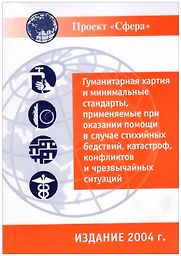Humanitarian Charter and Minimum Standards in Disaster Response
by The Sphere Project
This was launched after the Rwandan crisis and it’s based on human rights – specifically that everyone has the right to live in dignity. This is enshrined in international law but the handbook tries to define what dignity is. There is now a minimum standard for providing food relief, sanitation, shelter and so forth.
Recommendations from our site
“It’s very practical for people working in emergency response. It was launched after the Rwandan crisis and it’s based on human rights – specifically that everyone has the right to live in dignity. This is enshrined in international law but the handbook tries to define what dignity is. When everyone is rushing to provide assistance as quickly as possible there is now a minimum standard for providing food relief, sanitation, shelter and so forth. Particularly in the larger crises, such as the Rwandan genocide, there were lots of new NGOs and groups who just set up and did their best. But there was no real definition of what the assistance is or should be. Now there is and you can be called to account. Or you can just all agree on what the basis is without having to research it first. It’s a minimum standard and in a lot of emergencies it’s difficult even to reach it, but at least the standard is there. So it’s a very useful book and I have spent a lot of time training people on it. It is really helpful for everyone to know in advance what they are aiming to do. It has been translated into hundreds of languages and it’s used by thousands of different organisations and it’s recognised by donors as well as NGOs.” Read more...
Cassie Knight, Nonprofit Leaders & Activist






